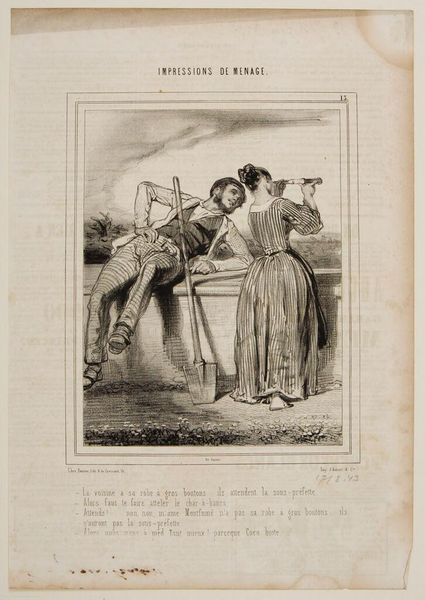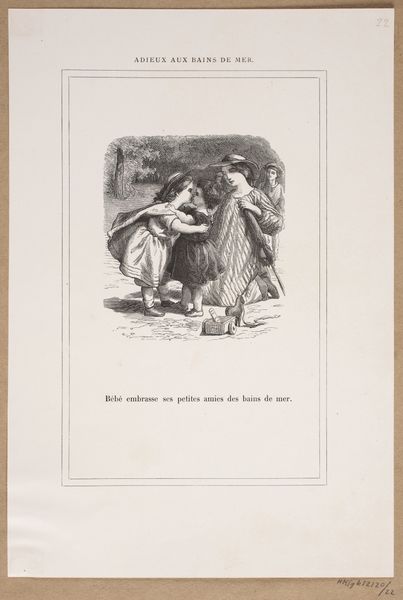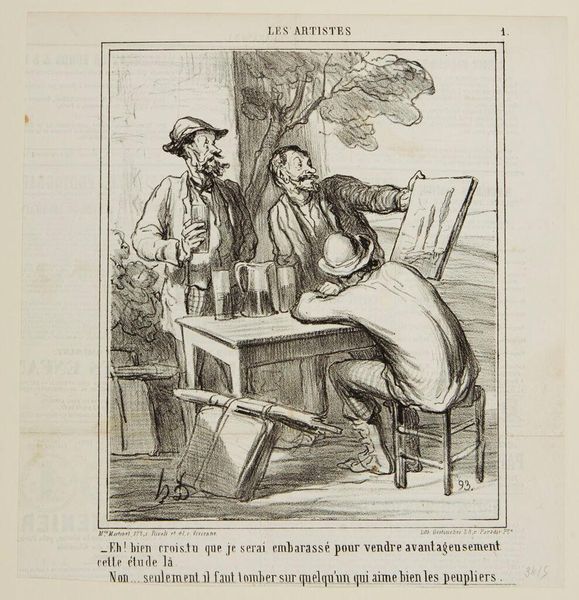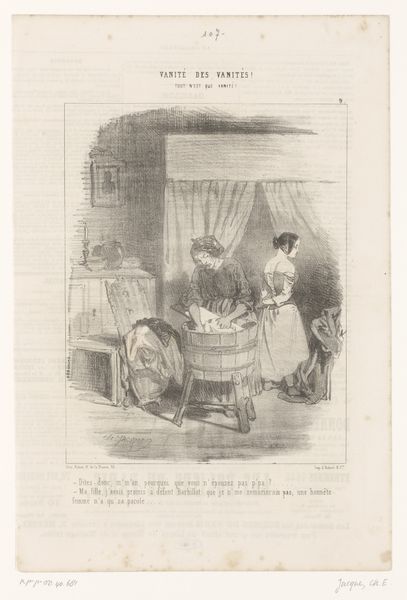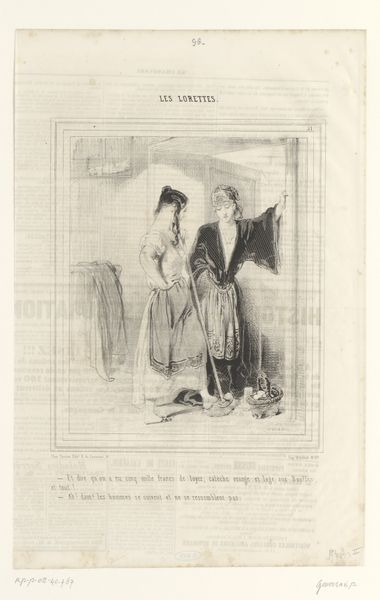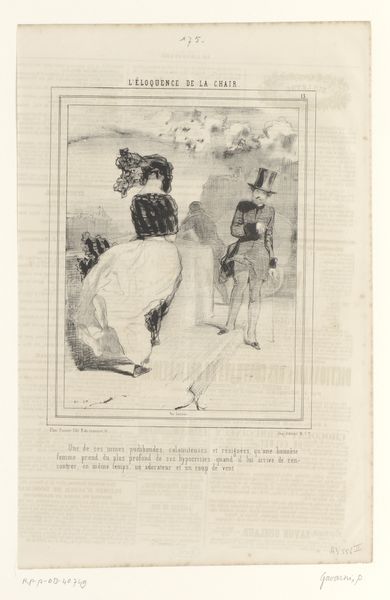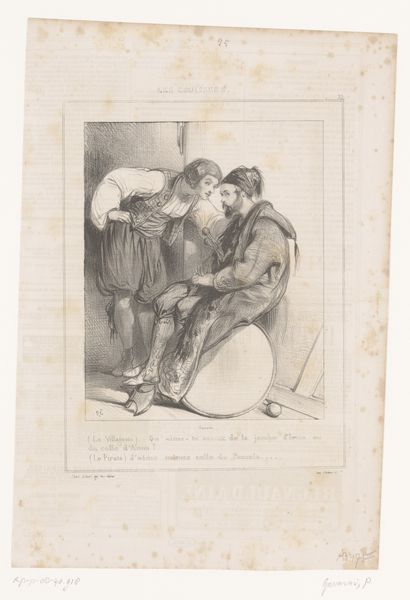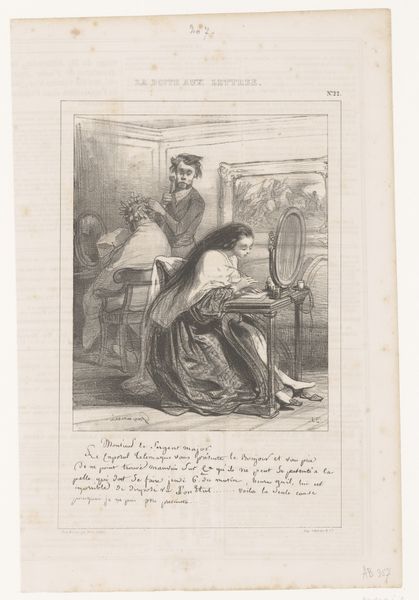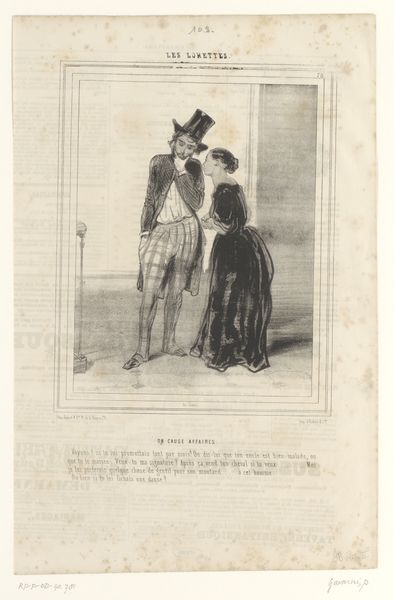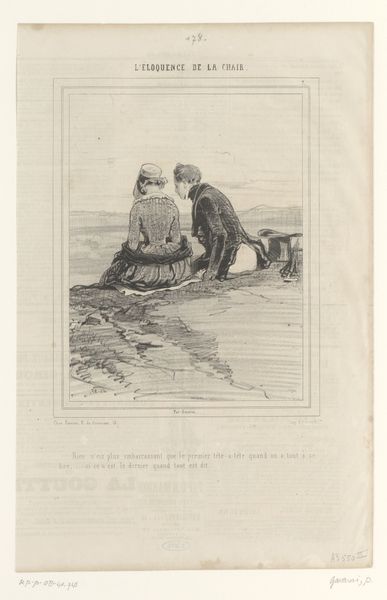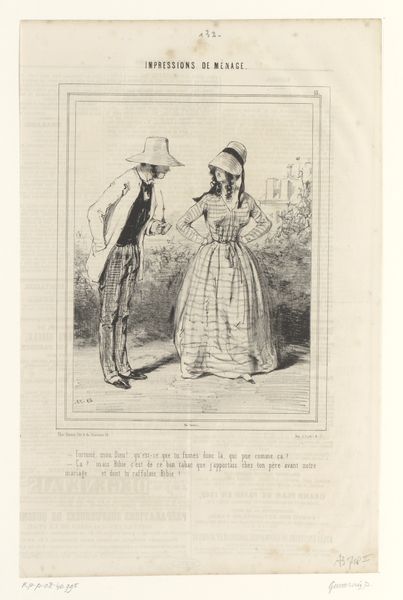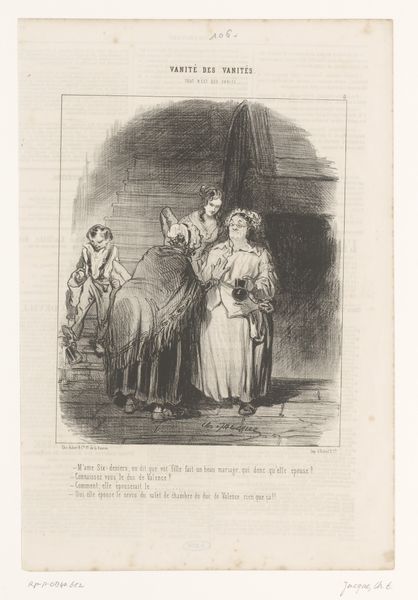
drawing, lithograph, print
#
drawing
#
narrative-art
#
lithograph
# print
#
caricature
#
pencil sketch
#
figuration
#
romanticism
#
genre-painting
Dimensions: height 362 mm, width 236 mm
Copyright: Rijks Museum: Open Domain
Editor: This is "Echtpaar bespiedt de buurvrouw met een verrekijker," or "Couple spying on the neighbor with binoculars," by Paul Gavarni, made in 1843. It’s a lithograph, and what strikes me most is the commentary it seems to make on leisure and class. How do you interpret this work? Curator: Well, considering Gavarni’s lithographic process – the labor involved in transferring the image to stone and printing it – and the medium's connection to mass production, it reframes our understanding of the "original" artwork and authorship. Where did the paper come from? Who was making the ink? Who printed it? These questions highlight the complex networks involved in producing and distributing images. The depiction of the man relaxing, with his shovel cast aside, versus the woman actively engaged in spying—using a manufactured instrument— suggests commentary on the division of labor. What do you think about that contrast? Editor: It makes me think about the consumption of images. Lithographs were relatively accessible. Were these kinds of prints a way for people to observe and maybe judge the lives of others? Curator: Exactly. This print becomes a commodity consumed by an audience who may be implicated in the very act of observing and judging depicted within the image. Consider the societal context of 1843; it's the dawn of mass media. This piece is less about pure artistic genius and more about social consumption and production. What new questions does that bring to mind for you? Editor: I guess, understanding the lithograph as a commodity makes the act of "spying" seem almost mass-produced too, something for popular consumption. I never considered those details before. Curator: Seeing the materials and context enriches the viewing experience beyond just aesthetics or narrative. Editor: Definitely. Looking at art from a materialist perspective brings so much more to the surface than just who made it and when.
Comments
No comments
Be the first to comment and join the conversation on the ultimate creative platform.
